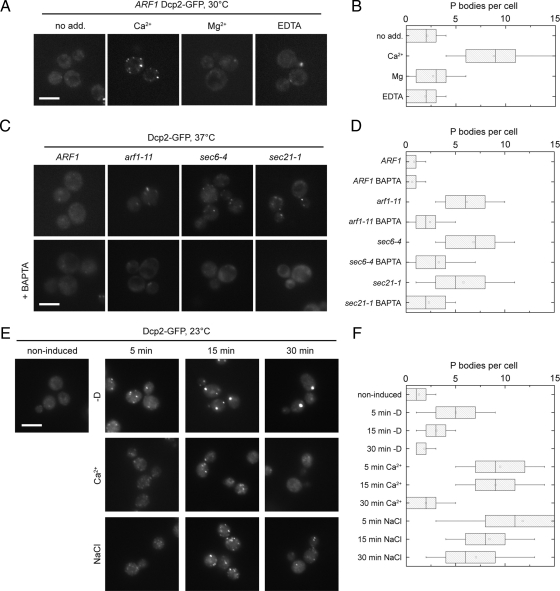Figure 3.
Ca2+ induces PB assembly to a similar extent as that of a secretion block. (A) Wild-type cells expressing Dcp2-GFP were treated with 200 mM CaCl2, MgCl2 or 12.5 mM EDTA for 15 min at 30°C, washed and inspected under the microscope. Only Ca2+ treatment induced multiple PBs. (B) Quantification of PBs in wild-type cells treated with Ca2+, Mg2+ or EDTA. See Figure 1B for details on the representation. (C) The Ca2+-chelator BAPTA prevents formation of multiple PBs in secretory transport mutants. Cells expressing Dcp2-GFP were pre-cultured in the presence or absence of 0.6 mM BAPTA and then shifted to 37°C for 1 h before inspection under the microscope. PB induction was strongly reduced. (D) Quantification of PBs in secretory mutants treated with BAPTA after shift to the nonpermissive temperature. See Figure 1B for details on the representation. (E) Time-course analysis of PB induction under various conditions. Wild-type cells expressing Dcp2-GFP were either harvested and resuspended in rich medium without a carbon source (−D), or treated with 200 mM CaCl2 or 0.5 M NaCl. After various time-points, samples were removed, fixed with formaldehyde, and analyzed under the microscope. PB response to Ca2+appears to be transient, whereas PBs induced by osmotic stress or starvation persist longer. (F) Quantification of PBs in the time-course experiment. See Figure 1B for details on the representation. Scale bars, (A, C, and E) 5 μm.

